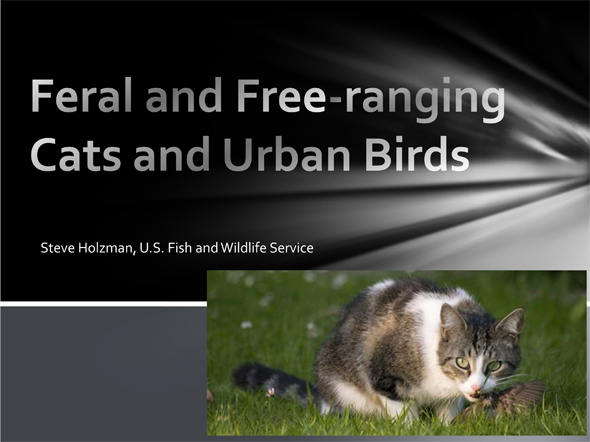Does the U.S. Fish and Wildlife Service have an official policy on free-roaming cats and TNR? The official word from the agency is no. But that hasn’t stopped Service employees around the country from suggesting otherwise.

Had you attended the Southeast Partners in Flight conference in February, you would, more than likely, have come away with the impression that the U.S. Fish and Wildlife Service has—despite statements to the contrary—an official, science-based position on free-roaming cats and TNR.
In his presentation Feral and Free-ranging Cats and Urban Birds, Steve Holzman, South Atlantic Geographic Area Data Manager for USFWS, argued that if the goal of PIF is to “keep common birds common,” predation by cats simply can’t be ignored. Among the “next steps” Holman proposed: “Continued work on USFWS position statement on feral and free-ranging cats, and zero tolerance on all federal lands, especially parks and refuges,” and “State policies that advocate trap and remove for all state lands.”
Hinting at what an uphill battle such policies face, Holzman pointed out that cats “are very popular,” and “currently represent 87.3 percent of all Internet content.”
This last bit was “delivered as a humorous aside,” notes Holzman in the endnotes of his revised presentation. “No one really knows what percentage of Internet content is related to cats.”
I’ll have to take Holzman at his word about this being a joke, as I wasn’t there.
But what about those very official-sounding policy proposals? Surely, the audience took that stuff seriously. And yet, those bullet points were purged in his recent round of edits—prompted by a lengthy e-mail I sent to Holzman. (“Your questions have led me to understand the need to revise the PowerPoint presented on the SEPIF website,” Holzman wrote.)
What’s going on here? Read more
